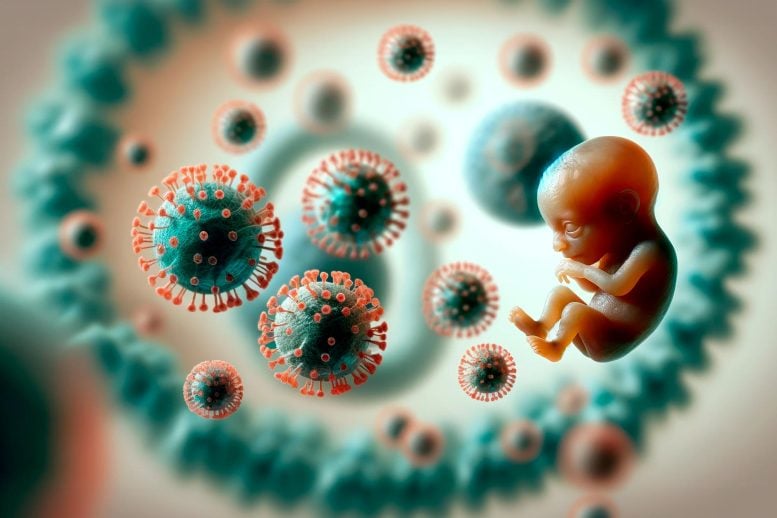Important Role of Ancient Virus in Embryo Development Discovered

Endogenous retroviruses play a crucial role in embryonic development, particularly in the transition from totipotency to pluripotency, according to researchers at CNIO. This finding challenges the previous understanding of ‘junk DNA’ and provides new insights into the symbiotic connection between viral genes and early embryonic development, which may have implications for regenerative medicine. Credit: SciTechDaily.com
The evolution of all animals has been influenced by specific viruses that infected primitive organisms hundreds of millions of years ago. This viral genetic material was incorporated into the genome of the earliest multi-cellular organisms and continues to exist within our DNA. For the first time, CNIO (Spanish National Cancer Research Centre) researchers have detailed the role these viruses play in a crucial process in our development, which occurs a few hours after fertilization: the transition to pluripotency when the oocyte shifts from having two to four cells.
Before this transition, each of the two cells within the embryo is totipotent, meaning it could develop into an independent organism; the four cells of the next stage are not totipotent but are pluripotent, as they can differentiate into any specialized tissue of the body.
The discovery, made by Sergio de la Rosa and Nabil Djouder, is vital for regenerative medicine and the creation of artificial embryos. It suggests new ways of generating stable cell lines in the totipotency phases. The researchers are part of the Growth Factors, Nutrients, and Cancer Group at CNIO, which is headed by Djouder.
The so-called 'endogenous retroviruses' genetic material got integrated into the genomes of organisms possibly influencing the Cambrian explosion, a period of significant biodiversity increase in the world's seas over 500 million years ago. This viral genetic material constitutes at least 8-10% of the human genome.
"These viral remnants were previously seen as 'junk DNA', unuseful or even detrimental genetic material," De la Rosa says. Recent research suggests that these retroviruses, which have coevolved with us over millions of years, play significant roles, such as gene regulation. It's a rapidly developing field of study."
Nabil Djouder, leader of the Growth Factors, Nutrients and Cancer Group at CNIO. Credit: Antonio Tabernero / CNIO
The researchers published their findings in Science Advances, revealing that the MERVL endogenous retrovirus plays a crucial role in embryonic development, particularly in the transition from totipotency to pluripotency, and reveals the mechanism behind this process.
"We've identified a new role for endogenous retroviruses," says Djouder. "We've found a new process that demonstrates how an endogenous retrovirus directly regulates pluripotency factors."
This new mechanism involves URI, a research focus of Djouder's group. It was previously found that removing URI in lab animals prevented embryonic development. De la Rosa uncovered its connection with the MERVL retrovirus when researching why this occurred.
The study shows that URI facilitates molecules vital for achieving pluripotency; if URI is inactive, pluripotency factors also remain inactive, leaving the cell in a state of totipotency. Unexpectedly, the molecule controlling URI's action is an endogenous retrovirus protein, MERVL-gag.
In the totipotency stage, with the oocyte consisting of only two cells, the MERVL-gag viral protein expression is high. This protein binds to URI, preventing its action. As the levels of this viral protein gradually decline, URI can act, leading to pluripotency.
De la Rosa explains, "It's a smooth transition. High viral protein expression results in fewer pluripotency factors; as ERV expression decreases, URI stabilizes these factors."
As stated by the authors in Science Advances, "Our findings demonstrate the symbiotic co-evolution of endogenous retroviruses with their host cells, ensuring smooth and timely progression of early embryonic development."
In other words, the viral protein, URI, and pluripotency factors interplay delicately, "providing enough time for the embryo to adjust and coordinate the untroubled transition from totipotency to pluripotency and cell lineage specification during embryonic development," concludes Djouder.




